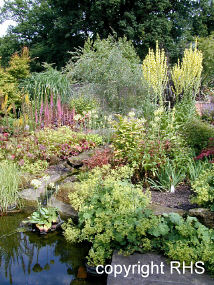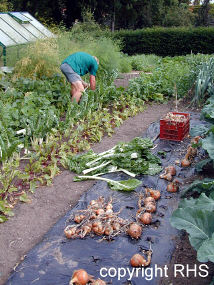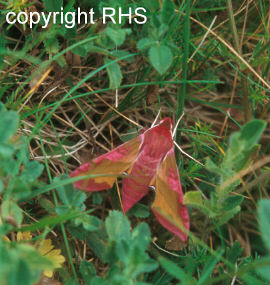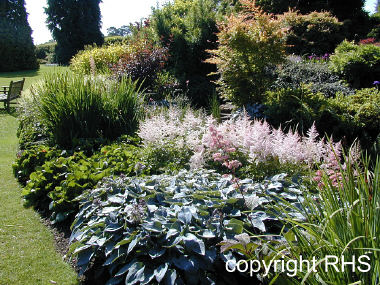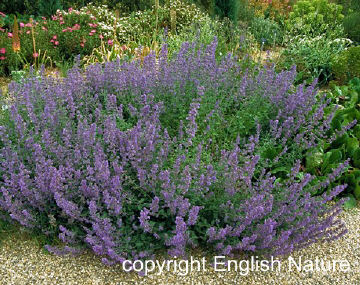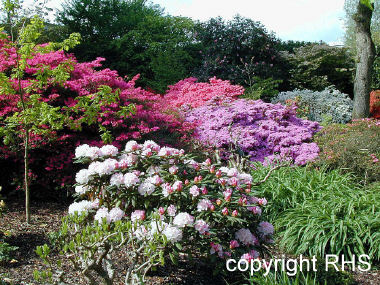GARDENS AND ALLOTMENTS
LOCAL BIODIVERSITY ACTION PLAN
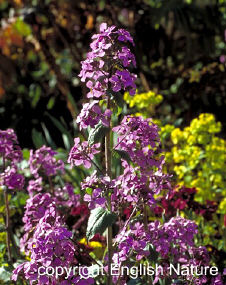 Links to associated SAPs
Links to associated SAPs
None
Current Status
The total area of gardens in Cheshire has been estimated at 3927 hectares while for the whole of the UK the figure is around 400,000 hectares.
The Local Records Centre, rECOrd, holds records specifically from gardens & allotments, including BAP species.
All Local Authorities within the Cheshire region have a compost bin scheme for householders, and all have green waste facilities at household waste sites. In addition, eight out of twelve local authorities now operate a kerbside collection for green waste.
Threats
-
Ignorance of the potential value of gardens and allotments for wildlife
-
Misguided management
-
Inappropriate use of chemicals
-
Use of inappropriate materials, for example, peat, timber from an inappropriate or unsustainable source, waterworn limestone.
-
Filling in of ponds because of safety concerns
-
Imbalance of hard/soft landscaping
-
Inappropriate choice of boundary design, creating barriers to wildlife
-
Inappropriate choice of plant species and cultivars
-
Reduction in size of domestic gardens due to increases in housing density and infill housing
-
Reduction in take-up of allotments, leading to neglect and subsequent loss to redevelopment
-
Poor domestic pet management
-
Public demand for gardens to fulfil idealistic expectations
-
Poor public image of a 'wildlife' garden, which is perceived as untidy
-
Proliferation of inappropriate garden products in the consumer market
-
Perceived problems of trees near buildings
-
Possible alienation of sections of the gardening public who think they are being asked to give up their neat lawn, patio, barbecue etc.
How are we helping to conserve Gardens and Allotments in the Cheshire region?
- Biodiversity garden at Chester Zoo
- Collation of information by rECOrd
- Volunteer Wildlife Gardening Officer at Cheshire Wildlife Trust
- Local Authority domestic green waste compost scheme
- Local Authority compost bin scheme
- Garden Centre promotions
- Courses on organic and wildlife gardening at Reaseheath College
- RHS Show, Tatton Park
- Butterfly Conservation local Gardening Group
- Butterfly Conservation national garden survey
- BTO national garden bird survey
- Cheshire Wildlife Trust Questionnaire
- Demonstration garden at the Salt Museum
Objectives, Targets and Actions
OBJECTIVES |
LOCAL TARGETS |
1. Raise awareness of the wildlife value of gardens and allotments
2. Maintain the nature conservation interest in gardens and allotments
3. Enhance the wildlife value of gardens and allotments |
1. Identify the available resource of gardens and allotments in the Cheshire region by 2006.
2. Establish a survey and monitoring system for gardens in the Cheshire region by 2006.
3. Establish a survey and monitoring system for allotments in the Cheshire region by 2007.
4. Establish a biodiversity demonstration garden in the Cheshire region by 2006.
5. Establish a biodiversity demonstration allotment in the Cheshire region by 2007.
6. Establish link with another relevant BAP Group by 2006. |
ACTIONS REQUIRED |
Action by LBAP Group
Establish resource of allotments in the Cheshire region
Collate and analyse information from survey and monitoring of gardens and allotments
Co-ordinate existing relevant action carried out by others
Form links with other BAP Groups
Form links with other relevant schemes and initiatives
Collate and review information and work of other groups to avoid duplication of effort
Review existing literature to find best practice and identify need for additional material
Evaluate, co-ordinate and promote existing available information
Produce a publications list
Keep up to date with current research
Compile list of speakers for garden wildlife talks
Monitor local garden wildlife talks, and set target to increase number
General Action
Be prepared to accept compromise in what is essentially a man-made environment.
Promote nature conservation as an opportunity, not a threat. Many so called 'ornamental' features in gardens are in fact good for wildlife e.g. 'cultivated' plants can often offer just as much for garden wildlife as 'native' ones, fountains and other water features are good in garden ponds, which are often small and nutrient rich and need that extra boost of oxygen to maintain good ecological balance, bird boxes can be designed to appeal to the public as well as fulfilling bird requirements, achieve a balance between appearance and wildlife function (eg cut lawns less often/set blades higher/sow less vigorous grasses as compromise between bowling green and hay meadow!)
Promote sympathetic design for wildlife eg shallow water for birds, 'escape' routes in steep sided ponds
Promote appropriate feeding of birds in gardens and allotments
Hold wildlife gardening promotional/demonstration events, involving sympathetic local garden centres and popular gardens open to the public
Local Authority Liaison
Investigate development of garden network to prevent urban areas being a barrier to wildlife (many wildlife corridors are blocked in urban areas, eg disused railways, watercourses)
Establish criteria for design of new housing development including layout, materials etc. to maximise environmental gain, facilitate network and minimise barriers
|
Progress so far
| 2005 Action Completed |
-
The creation of a Biodiversity Garden at Chester Zoo, based on the back to back garden at the RHS Show at Tatton Park in 2004.
-
Back to Back Garden at the RHS Show at Tatton in 2005 by Butterfly Conservation.
-
Collation of records specifically from garden and allotment habitats by rECOrd, the local records centre for the Cheshire region.
-
Identification of the garden resource by Local Authority in the Cheshire region.
-
Collation of information on all Cheshire region Local Authority’s green waste and composting schemes.
|
| 2004 Action Completed |
-
LBAP Group established
-
Gardens leaflet produced, focusing on three themes - planting flowers to provide nectar for butterflies, encouraging song thrushes and using compost in the garden.
-
'Back to back' garden at RHS Show at Tatton, designed by English Nature and Chester Zoo, which illustrated the three themes from the leaflet, and was awarded a bronze medal.
-
Questionnaire prepared for the RHS Show at Tatton to acompany the leaflet and garden.
-
'Tomorrow's Garden for Wildlife' theme for Countdown Conference in October 2004
|
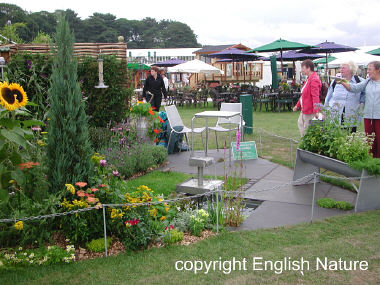 |
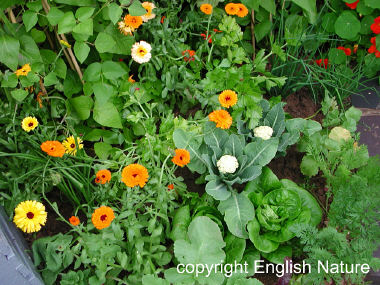 |
|
How to find out more about Gardens and Allotments
About the Royal Horticultural Society
Gardens leaflet
Royal Horticultural Society - www.rhs.org.uk
Society of Allotment and Leisure Gardeners - www.nsalg.demon.co.uk
CWT Wildlife Gardening Project
RHS and Wildlife Trusts Joint Project - 'Wild About Gardens'
DID YOU HEAR ABOUT THIS SITE FROM A GARDENS AND ALLOTMENTS LBAP LEAFLET?
IF SO, LET US KNOW! PLEASE FILL IN OUR FEEDBACK FORM.
Contact details
| LBAP Chair |
Mandy North, Natural England
Phone: 01942 820342 |
| National Lead Partners |
Natural England
|
| National Contact |
Roger Meade, Natural England
Phone: 01733 455565
Rebecca Longfield, Faber Maunsell
Phone: 01733 391456 |
References & Glossary
English Nature (1993): Midland Meres and Mosses RAMSAR Citation.
HMSO (1995): Biodiversity: The UK Steering Group Report, Volume 2:Action Plans, London.
JNCC (1997): The Habitats Directive: selection of Special Areas of Conservation in the UK. JNCC Report No. 270.
English Nature (1998): Natural Area Profile, Meres and Mosses 27.
English Nature (1998): Natural Area Profile, Dark Peak.
English Nature (1998): Natural Area Profile, South West Peak.
English Nature (1998): Natural Area Profile, Urban Mersey Basin.
English Nature (1998):A Strategy for the conservation of the Meres and Mosses of Cheshire, Shropshire and Staffordshire.
English Nature (1999): Natural Areas in the North West Region, helping set the regional agenda for nature.


 Links to associated SAPs
Links to associated SAPs 